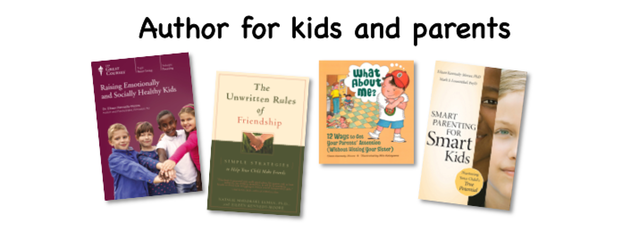Intelligence
The Roots of Social Justice—Kids’ Responses to Inequality
New study shows how children think about fairness and dominance
Posted September 30, 2016

“It’s not fair!”
You’ve probably heard your child loudly complain about injustice. Usually this complaint translates to “This doesn’t seem fair to me!” or “I don’t like how things are going.” But at what age can kids consider fairness to others?
Early Recognition of Unfairness
Children can recognize unfairness at an astonishingly early age. In one study by Marco Schmidt and Jessica Sommerville, 15-month-old toddlers were shown videos of a cartoon character divvying up crackers (or milk) to two other characters. In one version of the video, the cookies were distributed equally. In another version, one character got more crackers (or milk) than the other. The toddlers stared at the unequal division almost three seconds longer than they looked at the fair division, suggesting that unfairness was counter to what they expected. This wasn’t just an interest in asymmetry because just seeing two plates with uneven amounts of crackers didn’t produce differences in attention.
Despite this early awareness of inequality, concern for fairness to others takes time and maturity to develop. Two-year-olds often gleefully and autocratically declare, “Mine!” Arguments about who gets to play with a favorite toy are common among preschoolers. Across a variety of cultures, three-year-olds tend to hoard candy for themselves rather than share it, whereas five-year-olds are more willing to share resources equally (e.g., Rochat, et al., 2009). Even among elementary and middle school children, the idea of equitable sharing may not be fully embraced. They tend to share more when their actions are public rather than anonymous (e.g., Buhrmaster, Goldfarb, & Cantrell, 1992), and to share more with friends than nonfriends (Moore, 2009).
Addressing inequality is one of the most important issues of our time. Unequal resources usually translate into unequal power and opportunities. Unfortunately, both children and adults can fall into the trap of following or even justifying the status quo, perpetuating inequality (see review by Olson et al., 2011)
Weighing Power Versus Fairness
A new study by Rawan Charafeddine and her colleagues looked at how children think about fairness in contexts when one person is more dominant than others. In the first experiment, children observed a play involving two puppets in which one puppet, the dominant one, repeatedly decides the game that they will play. The children then had a chance to distribute a large and small piece of pretend chocolate to the puppets. Three- and four-year olds were likely to give the big chocolate to the dominant puppet. Five-year-olds were equally likely to favor either the dominant or nondominant puppet, but eight-year-olds almost all favored the nondominant puppet with the bigger chocolate. Older children were able to offer rationales for their actions that focused on fairness, such as giving the nondominant puppet the bigger chocolate “because he never got to choose the game.”
In a second experiment, children had a choice of taking a coin away from either a dominant puppet, who claimed to be the boss, or a nondominant puppet to give to a third nondominant puppet with fewer coins. Again, the youngest children allocated resources in a way that favored the dominant puppet by taking the coin away from the nondominant puppet, the five-year-olds showed no consistent favoritism pattern, and the majority of eight-year-olds took the coin away from the dominant puppet. In other words, as kids get older, they show increasing concern for fairness and greater willingness to act to rectify what they see as unfairness.
Reacting to Group Inequalities
Kristina Olson and her colleagues (2011, p. 274) note that “Acting against the status quo—especially a status quo in which one group is clearly privileged over another—is difficult insofar as it requires a recognition of inequality, a recognition of how the inequality can be rectified, and a willingness to do what it takes to rectify that inequality.”
In their experiments, children were told about two groups that were treated unequally, because members of one group received one cookie instead of two. They then had the opportunity to make up for this inequality by how they allocated cookies to new members of the same groups. When group membership was based on shirt color or White versus Asian ethnicity, the majority of children ages 3.5 to 11.5 years acted to perpetuate the inequality by maintaining the “rich get richer” status quo.
However, when children were told the two groups consisted of Blacks versus Whites, a very different pattern emerged: Around 70% of the younger children, under 7.5 years, perpetuated the inequality, whereas around 70% of the children 7.5 or older tried to rectify the inequality by giving more cookies to the underprivileged group. This occurred whether it was Whites or Blacks who initially received fewer cookies.
Olson and colleagues suggest that these findings point to the idea that children can understand and sometimes even act upon the need to address inequality and that having learned about historical and/or modern racial issues involving Blacks and Whites may have sensitized them to this need.
Teaching Social Justice
Sharing and fairness don’t come naturally to children. They tend to favor self-interest or to act in ways that assume that the status quo reflects what people deserve. Concern about social justice is learned.
Other research by Olson and her colleagues (Newheiser et al. 2014, Olson et al. 2008, Shutts et al., 2016) shows that children of various racial, ethnic, and economic backgrounds show preferences for people who are lucky and wealthy, believing that they are nicer and more popular. Children recognize differences in status and, in trying to make sense of the world, tend to assume that people "get what they deserve." This is called the "Just World Hypothesis," and even adults can be blinded by it (e.g., Lerner, 1980).
This means that parents and educators have a responsibility to teach children about social justice. Helping children to imagine how others feel, to become aware of current and historical injustices, and to explicitly consider the question of "What is fair?" can help them move toward embracing social justice. Most importantly, we need to show them that things can change. What was and what is doesn't have to be the same as what will be.
Related posts:
Why Kids Often Don’t Speak Up Against Bullying
Teaching Children To Read Emotions
__
© Eileen Kennedy-Moore, PhD
Subscribe to monthly email NEWSLETTER to be notified about new Growing Friendships posts.
Eileen Kennedy-Moore, PhD, is a clinical psychologist, author, and speaker, based in Princeton, NJ (lic. # 35SI00425400). Her books & videos include: Raising Emotionally and Socially Healthy Kids (audio/video series, 70% off at TheGreatCourses.com/Kids), Smart Parenting for Smart Kids, The Unwritten Rules of Friendship, and What About Me? 12 Ways To Get Your Parents' Attention Without Hitting Your Sister (for kids). Learn more at www.EileenKennedyMoore.com

Growing Friendships posts are for educational purposes only. You’re welcome to link to this post, but please don’t reproduce it without written permission from the author.
photo credit: "Sharing" by Nathan / CC BY 2.0
__
For further reading:
Buhrmester, D., Goldfarb, J., & Cantrell, D. (1992). Self presentation when sharing with friends and nonfriends. Journal of Early Adolescence, 12, 61-79.
Charafeddine, R., Mercier, H., Clément, F., Kaufmann, L., Reboul, A., Van der Henst, J-B. (September, 2016). Children's allocation of resources in social dominance situations. Developmental Psychology.
Lerner, M. J. (1980). The belief in a just world: A fundamental delusion. New York: Plenum Press.
Moore, C. (2009). Fairness in children’s resource allocation depends on the recipient. Psychological Science, 20, 944-948.
Newheiser, A-K., Dunham, Y., Merrill, A., Hoosain, L., Olson, K.R. (2014). Preference for high status predicts implicit outgroup bias among children from low-status groups.
Developmental Psychology, 50, 1081-1090.
Olson, K. R., Dunham, Y., Dweck, C. S., Spelke, E. S., & Banaji, M. R. (2008). Judgments of the lucky across development and culture. Journal of Personality and Social Psychology, 94, 757-776.
Olson, K. R., Dweck, C. S., Spelke ,E. S., & Banaji, M. R. (2011). Children’s responses to group-based inequalities: Perpetuation and rectification. Social Cognition, 29, 270-287.
Rochat, P., Dias, M. D. G., Liping, G., Broesch, T., Passos-Ferreira, C., Winning, A., & Berg, B. (2009). Fairness in distributive justice by 3- and 5-year-olds across seven cultures. Journal of Cross-Cultural Psychology, 40, 416-442.
Schmidt, M. F. H., & Sommerville, J. A. (2011). Fairness expectations and altruistic sharing in 15-month old human infants. PLoS ONE, 6, e23223.
Shutts, K., Brey, E.L., Dornbusch, L.A., Slywotzky, N., Olson, K.R. (2016) Children use wealth cues to evaluate others. PLoS ONE, 11, e0149360.




